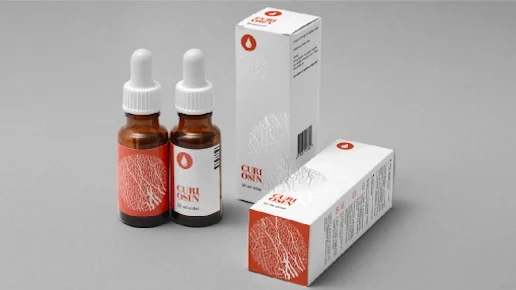Medical packaging design is the process of creating safe, functional, and compliant packaging for medical products. It is a protective design that keeps medical products sterile, secure, and ready to use.
In healthcare, packaging plays a direct role in patient safety. A good design ensures that products arrive in perfect condition, free from damage or contamination.
In this blog, you will learn the importance, key features, and packaging for different medical products.
Importance of Medical Packaging Design
Medical packaging design is essential for keeping products sterile, safe, and easy to use.
It protects against contamination and damage while providing clear instructions and safety warnings. Well-designed packaging also builds trust in medical brands.
Regulatory and Compliance Requirements
Medical packaging must follow strict laws and standards to ensure safety.
FDA guidelines
In the United States, the Food and Drug Administration (FDA) sets rules for packaging medical products. These include safety tests, labeling rules, and approved materials.
ISO 11607 and other standards
ISO 11607 is a global standard for packaging sterile medical devices. It ensures the packaging can maintain sterility until the product is used.
Labeling and language requirements
Labels must be clear, accurate, and easy to read. In many countries, they must be in the local language and include important details like expiration dates and usage instructions.
Safety symbols and warnings
International symbols like “Do Not Reuse” or “Keep Dry” help users understand packaging quickly.
Key Features of Medical Packaging Design
- Tamper-evident seals: Show if the product has been opened or altered.
- Child-resistant closures: Keep children from opening dangerous medicines or devices.
- Easy-to-open designs: Important for patients with limited strength or mobility.
- Clear and accurate labeling: Prevents confusion and mistakes.
- Barrier protection: Blocks moisture, oxygen, light, and bacteria.
Types of Medical Packaging
Primary Packaging
Holds the product directly. Examples: blister packs, pouches, bottles, syringes.
Secondary Packaging
Outer boxes or cartons that protect and organize primary packaging.
Tertiary Packaging
Bulk packaging for shipping and storage, like large cartons or crates.
Common Materials Used in Medical Packaging
- Medical-grade plastics (PET, HDPE, PVC) – Strong, lightweight, and resistant to damage.
- Medical paper and Tyvek® – Breathable yet protective, often used for sterilized products.
- Foils and laminates – Provide high barrier protection against moisture and air.
- Glass – Used for vials, ampoules, and certain liquid medicines.
Packaging Design for Different Medical Products
Surgical instruments
Require strong, sterile packaging to prevent contamination.
Pharmaceuticals
Tablets, capsules, and liquids need child-proof and tamper-proof containers.
Medical devices
Diagnostic kits or implants need packaging that protects delicate components.
PPE (Personal Protective Equipment)
Masks, gloves, and gowns should be sealed to stay clean and safe.
Disposable medical supplies
Syringes, test strips, and swabs need sterile, easy-to-open packaging.
Sterilization Compatibility in Packaging Design
Medical packaging must resist sterilization processes without damage.
- Ethylene oxide (EtO) – Suitable for heat-sensitive items.
- Gamma radiation – Kills bacteria without high heat.
- Steam autoclave – Uses heat and pressure, ideal for surgical tools.
Sustainability in Medical Packaging
While safety is the top priority, brands are making sure they packaging is eco-friendly.
- Eco-friendly medical-grade materials – Recyclable plastics or bio-based options.
- Waste reduction – Smaller, smarter packaging designs.
- Recycling challenges – Medical waste rules often limit recycling, so innovation is key.
Smart and Digital Features in Medical Packaging
- QR codes – Give instant access to dosage guides, videos, or product authentication.
- RFID tags – Help track products through the supply chain.
- Temperature indicators – Show if a product has been stored correctly.
Common Mistakes to Avoid in Medical Packaging Design
- Ignoring regulations – Can lead to recalls and legal trouble.
- Overcomplicating opening – Frustrates patients and healthcare workers.
- Using unclear labeling – Can cause dangerous mistakes.
- Choosing wrong materials – May damage the product or fail sterility tests.
10 Medical Packaging Design Ideas
Here are 10 smart ideas that make medical packaging safer and easier to use:
- Clear, Simple Layout
Avoid busy patterns or too much information. Keep text large and easy to read for quick understanding.
- Color-Coded Sections
Assign different colors to product types or dosages to prevent mistakes.
- Transparent Windows
Let users see the product without breaking the seal.
- Flat-lay Kits
Arrange items in sequence for quick use in medical settings.
- Universal Symbols
Use globally recognized icons for faster recognition and better accessibility.
- Separate Compartments
Keep different components apart.
- Tamper-Proof Features
Add seals or locks that clearly show if the packaging has been opened.
- Highlighted Key Information
Bold important instructions for a better user experience.
- Space-Saving Shapes
Design packaging that stacks or fits together to save storage space.
- Grip-Friendly Texture
Use non-slip or raised patterns to help patients with limited dexterity.
Conclusion
Medical packaging design is about safety, compliance, and trust. The right design keeps products sterile, clear to use, and compliant with laws.
Whether it’s a simple syringe or a complex surgical kit, good packaging makes everything easier and strengthens brand reputation.

